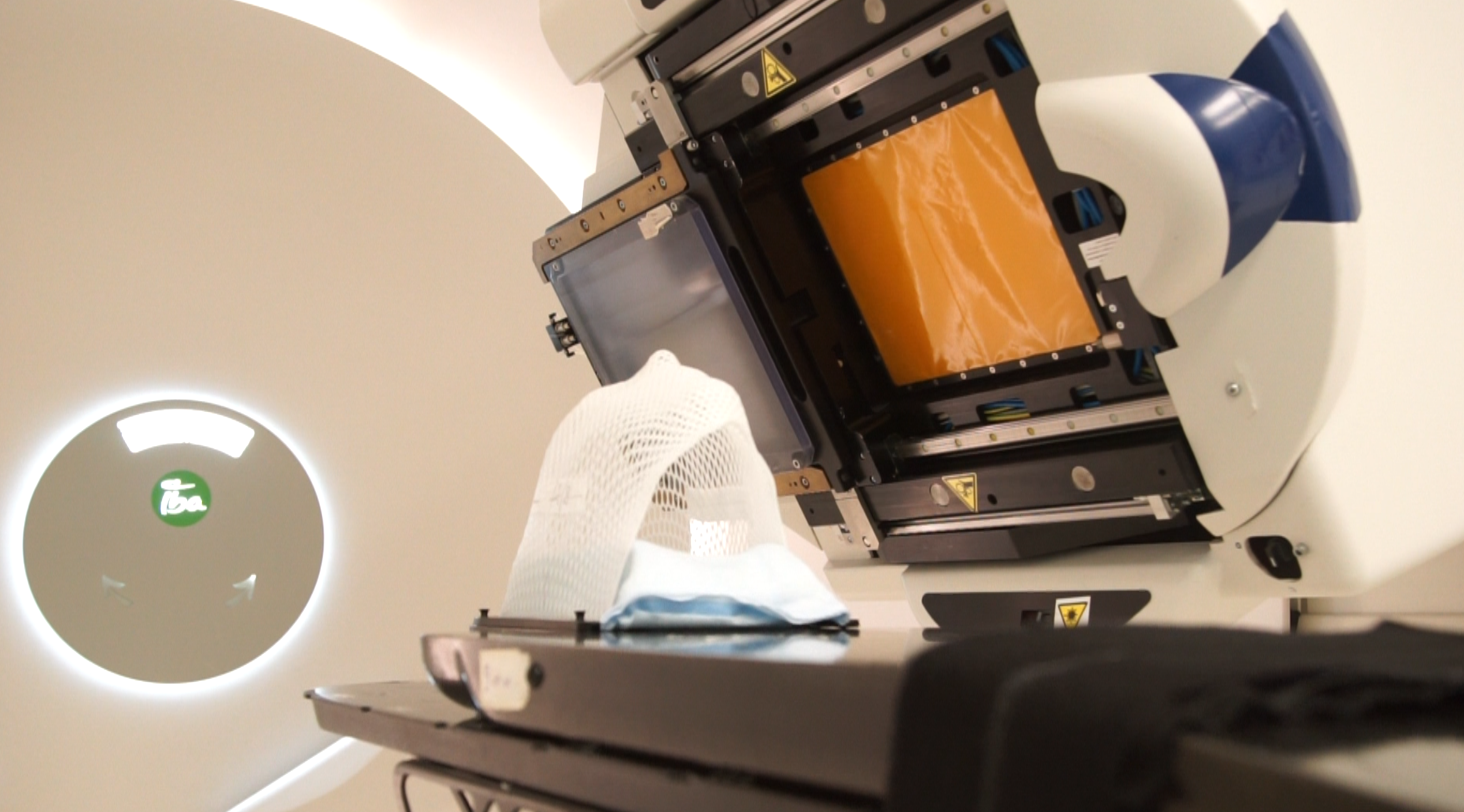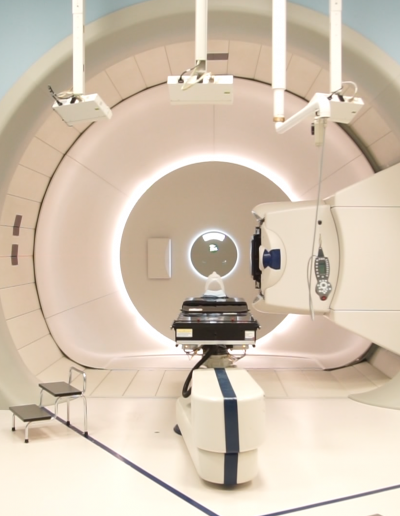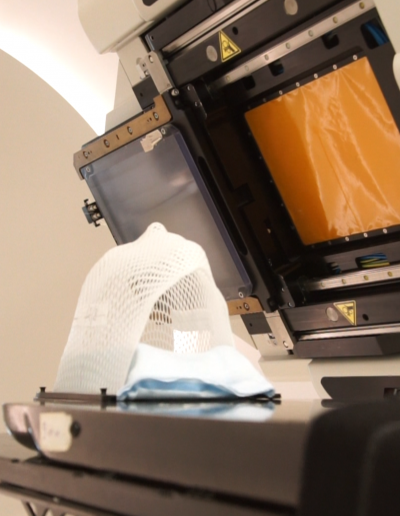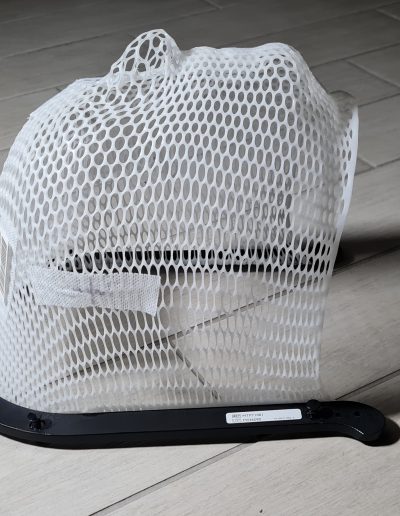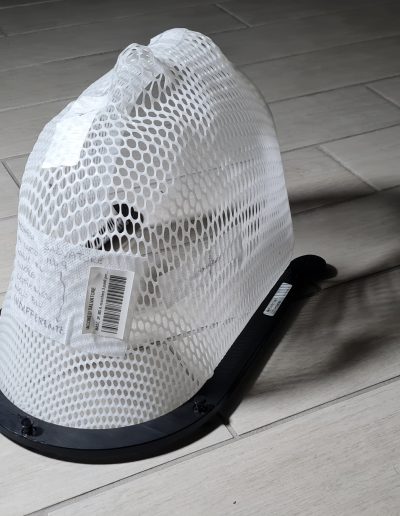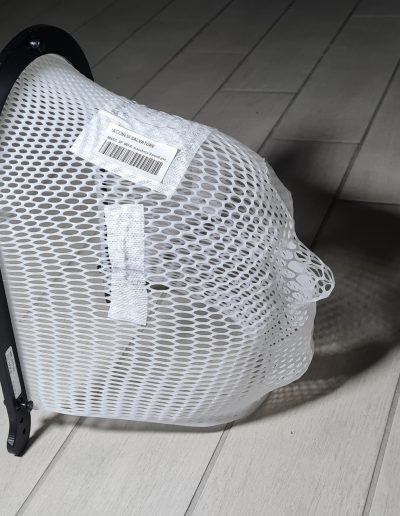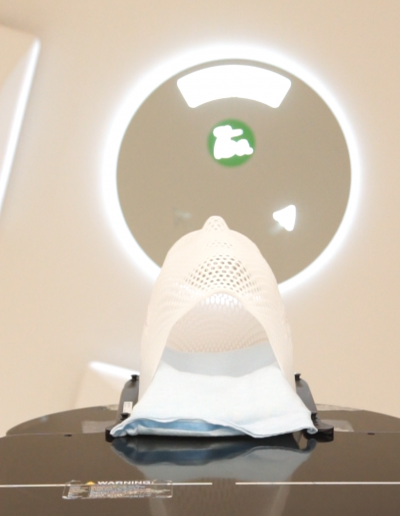Di Protoni e Dati
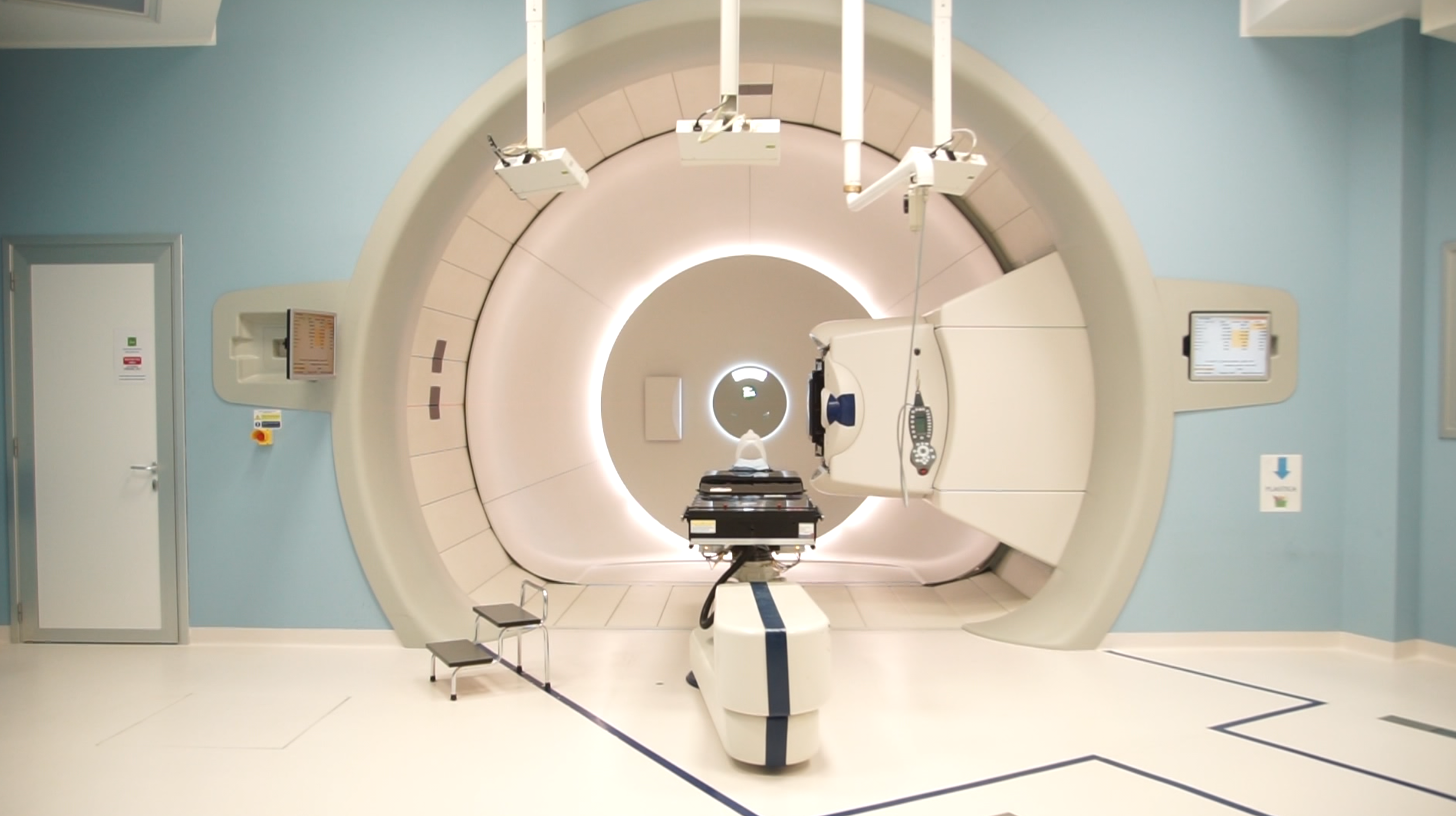
Transforming Data into Sounds, to make radiation perceivable
“Di Protoni e Dati” is a Science/Technology/Art collaboration in which the medical data about a protontherapy treatment is transformed into sounds to explore new forms of wellness, innovative ways of sharing and solidarity connected to disease, and new forms of representation of data.
The Artwork
The artwork takes the data from a protonterapic session, and transforms it into a video with an immersive, 3D sound, which can be played back using headphones, or, better, on a dedicated audio system, so that the person hearing the sound can perceive where the proton radiations are entering the body, relatively to the way the patient’s body is positioned into the Gantry.
The artwork also includes the thermoplastic mask modeled around the face of the patient (in this case: Salvatore Iaconesi’s mask, who underwent treatment in 2020), and which is used during the treatment, to keep the patient from moving.
Furthermore, a short documentary completes the exhibit, in which the protagonists and partners talk about why it is a good idea to establish these collaborations between sciences, technologies and the arts.
Why it is important
At HER: She Loves Data we feel that these research and artwork are important for multiple reasons.
Intimately, for the people who undergo protontherapeutic and other radiant treatments, it represents an opportunity to better understand what happens to their bodies, in simple, accessible immediate ways. We feel that this opportunity is of fundamental importance to be able to benefit from one’s rights and freedoms, as patient and person as a whole.
When radiation data is transformed into 3D sounds, it is possible to experience it in simple, immersive ways, opening up opportunities for relationality, society and scientific research.
From relational and social perspectives, therapies, most of the time, do not provide sufficient oppoortunities for sharing one’s experiences, fears, expectations and, in general emotions. This results in limited opportunities for relationately building empathy and forms of solidarity.
Note that this is true for the single cases, but, as we have seen in the case of the COVID pandemics, it can be an important advantage for entire cities and territories.
In Di Protoni e Dati, therapy becomes a cultural artifact, as it is transformed into music and sounds. Thus, is can be shared with friends, relatives and kins, who can experience some of the feelings and more easily build meaningful conversations of empathy and solidariety.
On top of that, art’s ways of dealing with data are very different from sciences, for example in the requirements for real-time, aesthetics and communicability. Adding and remixing these different ways of dealing with data, in our experience, can provoke radical innovations, as researchers and artists are, in a way, systematically forced into experimenting with processes that are not usual for them, and sometimes even unknown.
Furthermore, the collaboration between artists and researchers is always beneficial for the communication of the results of scientific and technological innovation, which in this way can benefit from a privileged access point in culture.
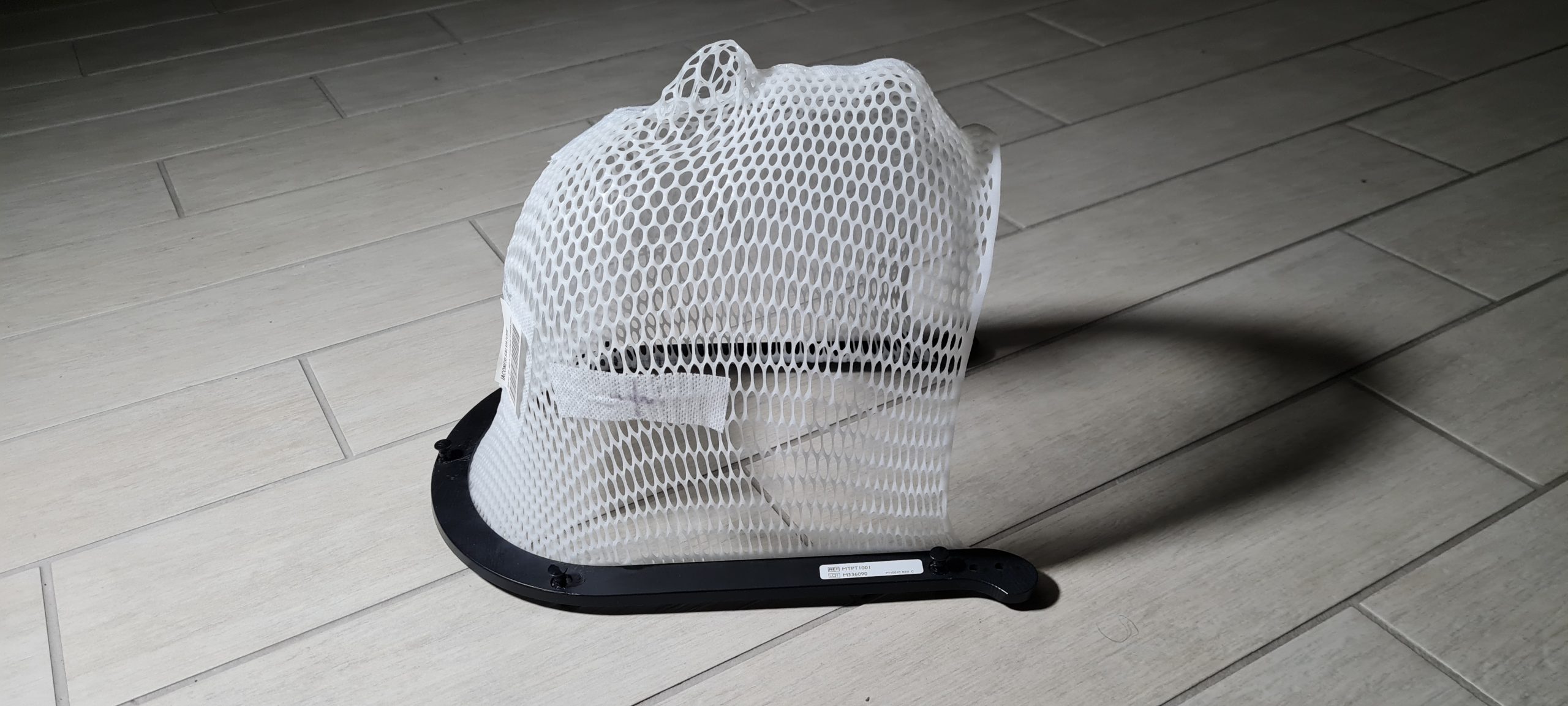
What is Protontherapy
In the field of medical treatment, proton therapy, or proton radiotherapy, is a type of particle therapy that uses a beam of protons to irradiate diseased tissue, most often to treat cancer. The chief advantage of proton therapy over other types of external beam radiotherapy (e.g., radiation therapy, or photon therapy) is that the dose of protons is deposited over a narrow range of depth, which results in minimal entry, exit, or scattered radiation dose to healthy nearby tissues.
For this project we have collaborated with Azienda provinciale per i servizi sanitari – Centro di protonterapia Provincia autonoma di Trento.
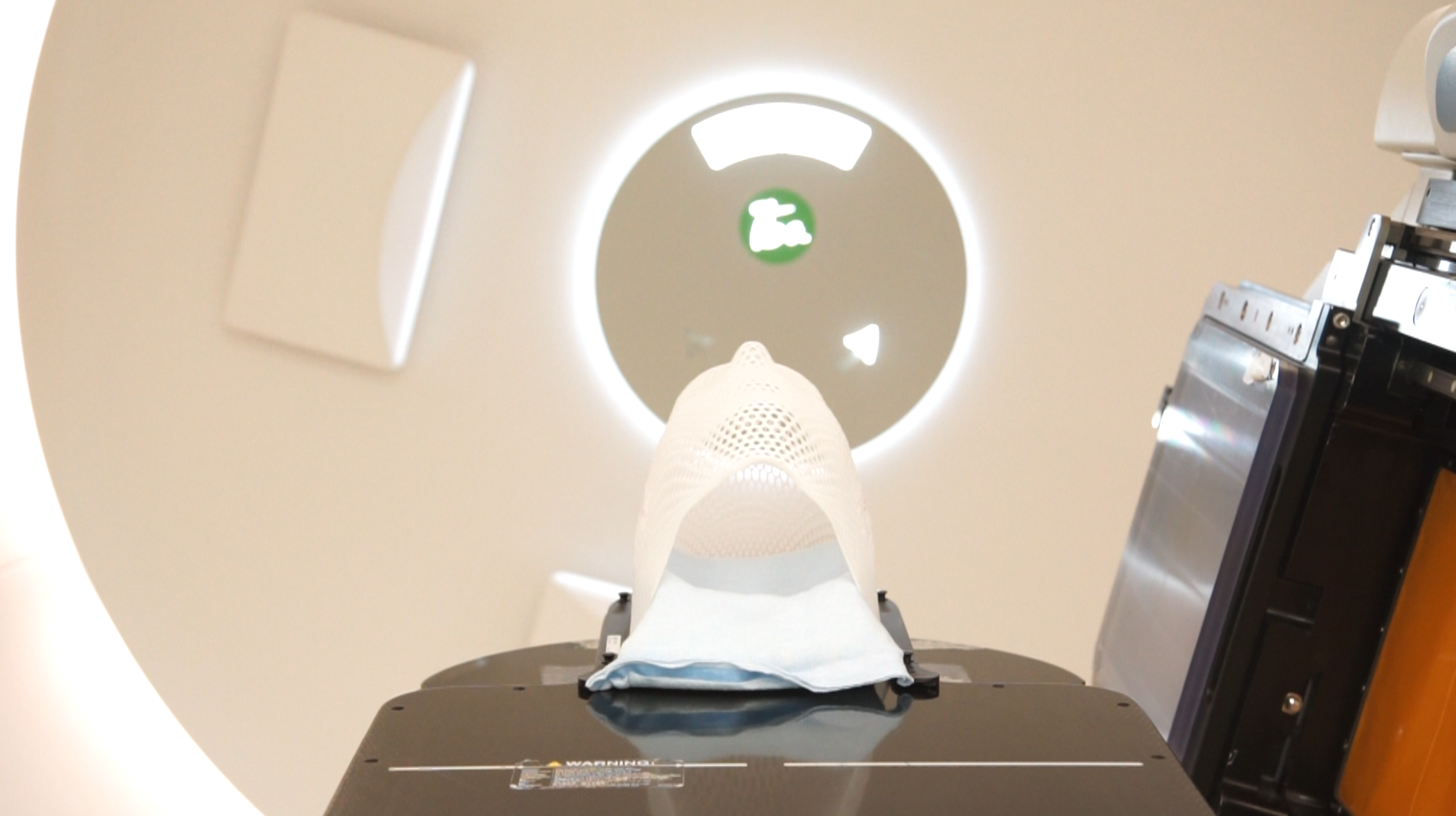
Science, Technology and the Arts: the partners and credits
Di Protooni e Dati is an artwork and research project in collaboration with:
- Fondazione Bruno Kessler
- HER: She Loves Data
- Nuovo Abitare
- Azienda provinciale per i servizi sanitari – Centro di protonterapia Provincia autonoma di Trento
- PlusValue
Concept: Salvatore Iaconesi & Oriana Persico
On site shooting: Alessandro Girardi
Software and 3D sound: HER She Loves Data
Documentary editing and post-production: Federico Poni
Special thanks:
- prof. Maurizio Amichetti, doct. Dante Amelio, Marco Schwarz and all of Centro di Protonterapia for access to data, premises and instruments, and for the extraordinary human and professional availability
- Giovanna Zobele and Fiorenza Lipparini for being our headquarters and family in Trento
- Nadio Delai, Michele Kettmaier, Luca De Biase, Fiorello and Alessio Cortiana, Fabrizio Fassio, Guido Vetere and Alberto Marinelli for the sensibility and the capacity of being bridges that unite concepts, people and institutions
The technique
A software has been created to pull information from the DICOM data used to store the information about each protontherapeutic session: quantity, energy, duration, angle and orientation of the gantry and of the bed mounted onto the robotic arm.
This data is then used:
- to calculate geometrically the position of the gantry in relation to the position of the robotized-bed, to generate the parameters that are needed to generate the sound (where are the patient’s ears in relation to the particle emitter?)
- to generate the sounds accordingly
About the sound generation: various experiments have been made, for different purposes.
In the artwork, for aesthetic reasons, we wanted to achieve a sound type that was humorously alien: something strange and different from our everiday perception, but also “magic” and “curious”.
Other experiments have been tested to try to achieve different types of results, as well.
For example, the patient’s position is not very comfortable, with the head squeezed down onto the table by the mask, eyes often shut closed, and difficult breathing. Music can provoke whole series of beneficial effects in this scenario, from promoting and supporting more regular breathing patterns, to relaxation effects, to making it easier to stay still, which is very important when undergoing a radiation treatment.
These tests and experiments will be documented in an upcoming publication.
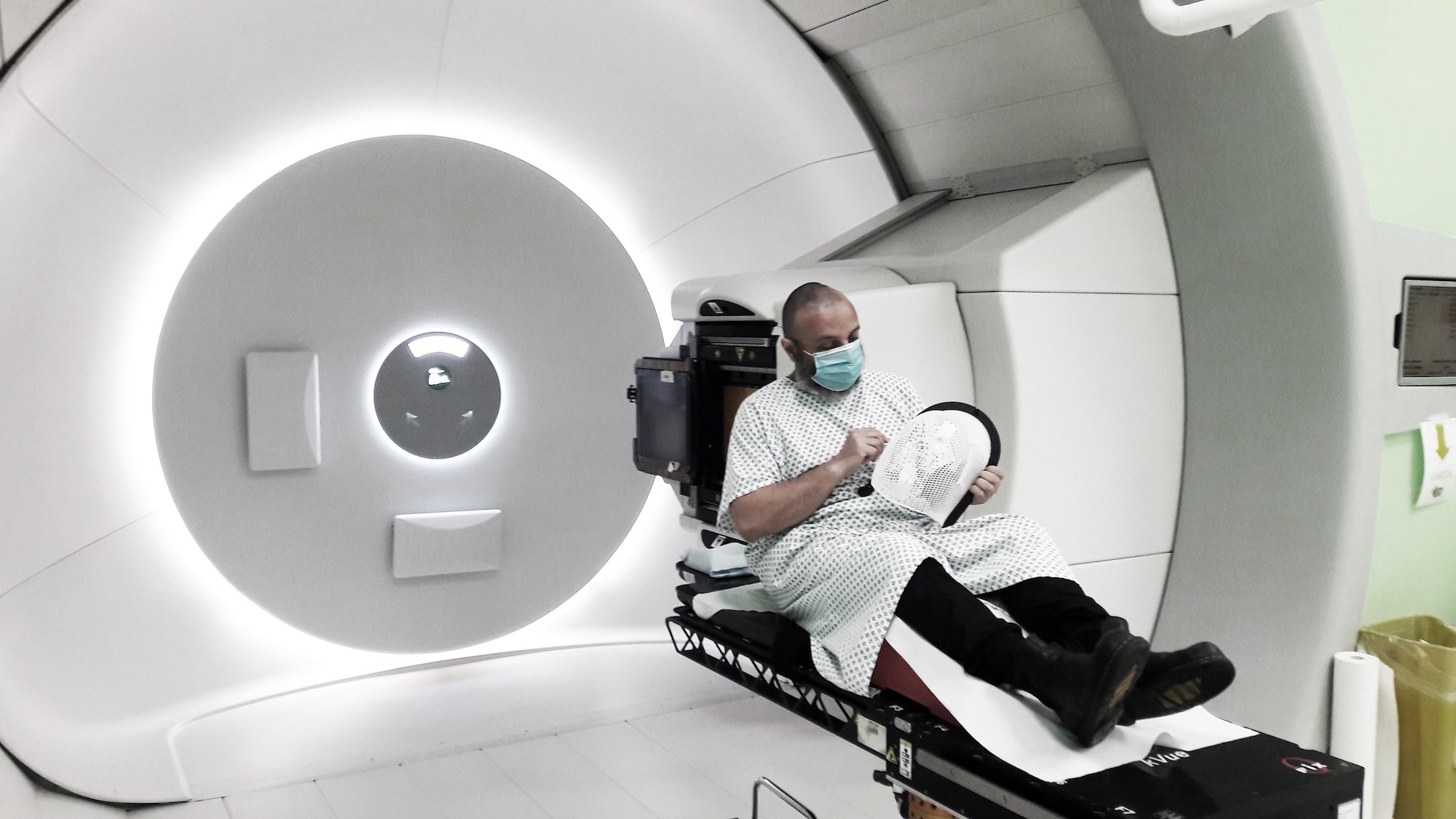
The story
While undergoing a protontherapy treatment session, Salvatore Iaconesi, HER’s president, first had the idea for this research and artwork.
First Screening
Di Protoni e Dati was first shown during an online event created by the partners on March 27, 2021.
Program
- Facilitation:
- Barbara Carfagna
- Presentations:
- Alberto Abruzzese, Mediologist
- Alessandro Dalla Torre, Fondazione Bruno Kessler
- Nadio Delai, Ermeneia
- Salvatore Iaconesi & Oriana Persico, HER/Nuovo Abitare
- Fiorenza Lipparini, PlusValue
- Michele Kettmaier, MediaCivici
- Maurizio Napolitano, Fondazione Bruno Kessler
- Marco Schwarz, Responsible for the Department of Physics at Centro di Protonterapia della Provincia Autonoma di Trento
- Angela Tecce, President of Fondazione Donnaregina per le arti contemporanee – Madre Museum, Napoli
